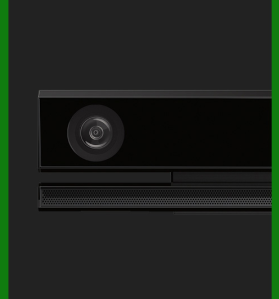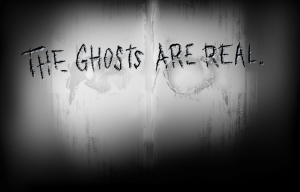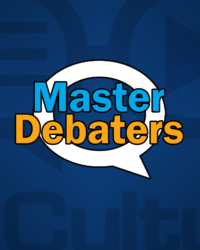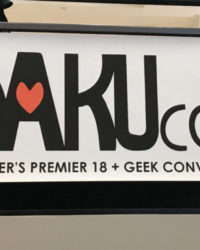 Just a little while ago from their Redmond campus, Microsoft finally pulled the curtain and gave us all the big reveal on their successor to the Xbox 360 – The Xbox One, announcing that it will be available later in 2013. Not to be confused with the old classic Xbox 1, the new unit is geared to be an all-in-one box as described by Xbox exec Don Mattrick. Sitting next to the this all-in-one box was a new Kinect sensor, as well as the newly designed controller. I watched the live stream (well as much as I could) and while it didn’t provide a ton of helpful information, there was some.
Just a little while ago from their Redmond campus, Microsoft finally pulled the curtain and gave us all the big reveal on their successor to the Xbox 360 – The Xbox One, announcing that it will be available later in 2013. Not to be confused with the old classic Xbox 1, the new unit is geared to be an all-in-one box as described by Xbox exec Don Mattrick. Sitting next to the this all-in-one box was a new Kinect sensor, as well as the newly designed controller. I watched the live stream (well as much as I could) and while it didn’t provide a ton of helpful information, there was some.
What was Covered:
What was showed off was voice control – with the unit being powered on by a user simply saying “Xbox on.” Using voice, the controller, or gesture commands with the Kinect sensor, the user can easily switch between the Xbox Live UI and Live TV. The UI itself is is very Windows 8 in the sense that there’s tiles for a lot of things on the interface. This isn’t really that surprising considering that with Windows 8 Microsoft was pushing a lot of their services and devices into a connected ecosystem, shoving Xbox under that umbrella as well. Part of that is pretty sweet connectivity, with special software designed to be able to connect between a Windows OS as well as the Xbox interface. It also seems that Microsoft has learned from their HD-DVD missteps with the 360, giving the One an optical drive that supports Blu-ray discs. The unit handles games, internet and web apps, Skype functionality as well as live TV. That seems pretty close to the “all-in-one” description that Mattrick was talking about, adding that it must be “simple, instant, and complete.” I guess “complete” also means that the system can pick up and measure your heartbeat while you exercise.
 There was also some description on the controller, designed with improved ergonomics and a new D-pad, designed with gamers helping to make it better for gamers.
There was also some description on the controller, designed with improved ergonomics and a new D-pad, designed with gamers helping to make it better for gamers.
As for the rest of the livestream itself, there was a big to-do about the partnership between Xbox and EA, showing off a bunch of games from EA Sports including FIFA, UFC, Madden and FIFA, all to be released over the next year. The EA montage came with the unveiling of EA Ignite, an engine designed “specifically to help us blur the line between the real and the virtual,” according to Andrew Wilson.
The Xbox folks also announced that there would be 15 exclusive titles for the Xbox One over the year, showing one of them (presumably) as Quantum Break, which appeared to focus around a kid with superpowers. Claiming that they’re investing more in a bunch of studios around the world to create original content, they say that these 15 exclusives will cover 8 different and brand new franchises.
Next came some celebrity guests from different areas of entertainment. Steven Spielberg joined via teleconference to talk about a new Halo live action television show, broadcast as “premium television” through the Xbox One. I for one don’t really care, but if that’s you’re thing, well there you go. Roger Goodell, commissioner of the NFL, also stopped by on screen talking about the partnership between Xbox and the NFL: “You’re going to change the football in a way that is so dramatic.”
 They closed out the livestream with a preview of Call of Duty: Ghosts, focusing a great deal on the fact that the game has dogs in it, at which point my stream started flipping out, but it seemed like they revealed very little information on it as well as other games for that matter. I guess they’re saving it all of e3.
They closed out the livestream with a preview of Call of Duty: Ghosts, focusing a great deal on the fact that the game has dogs in it, at which point my stream started flipping out, but it seemed like they revealed very little information on it as well as other games for that matter. I guess they’re saving it all of e3.
Funny sidenote about the stream flipping out – I lost the stream 3-4 times through the whole proceedings, one of them being just as they were talking about how they have 300,000 servers to support Xbox Live. Unfortunately none of them allowed xbox.com to get through 15 minutes of stream without crashing.
Oh right – machine specs:
- Processor: Custom AMD chip, 8-core GPU, DirectX 11.1, 32MB ESRAM (28nm chip for those interested in fabrication)
- Memory: 8GB RAM (DD3)
- Storage: 500GB internal hard drive
- Audio/Video: 1080p and 4K support, can do 7.1 surround
- Connectivity: HDMI 1.4 output/passthrough, USB 3.0, WiFi Drect
What Wasn’t:
While they kept saying that the Xbox One was connected, they didn’t explicitly address fans’ concerns about “always on.” I had to get intel from other sources who had a more hands on experience with the One for that. According to Wired, the One will not be always on as was heavily rumored. Which begs the question, how did THIS WHOLE NONSENSE even occur in the first place? I don’t know. I guess folks can get a little nuts in the twitterverse. But I found out some other things too:
While it may not be always on, game discs will all have to be downloaded to the console’s internal hard drive (which makes me really worry about only a 500GB hard drive). But once the data is on said hard drive, the user can play it whenever he or she chooses, and it will be connected to their XBL gamertag. But if that disc is used with a different account, the person holding that second account has the option of paying a fee to install it to his or her hard drive and play. Without that download though, play with just the disc and not copying anything to the hard drive is restricted. According to Wired, Microsoft didn’t have an answer as to if or even how this policy would potentially be altered for the used games market or players that rent games.
As far as the “always” on rumors? Yes and no. Game developers making games for the One have access to use Microsoft’s Azure cloud services platform to bump some of the game tasks to the cloud. In this case yes you would require an internet connection. If a game in question does not actually utilize Azure, then no, you will not need a connection. I have no basis to make a prediction on what percentage of Xbox One games will utilize Azure, but my guess is that Microsoft is really going to try and push it.
So there it is in a nutshell kids. I’ll keep my eye out for further details to keep you in the know.
Tushar Nene
Staff Writer
@tusharnene















